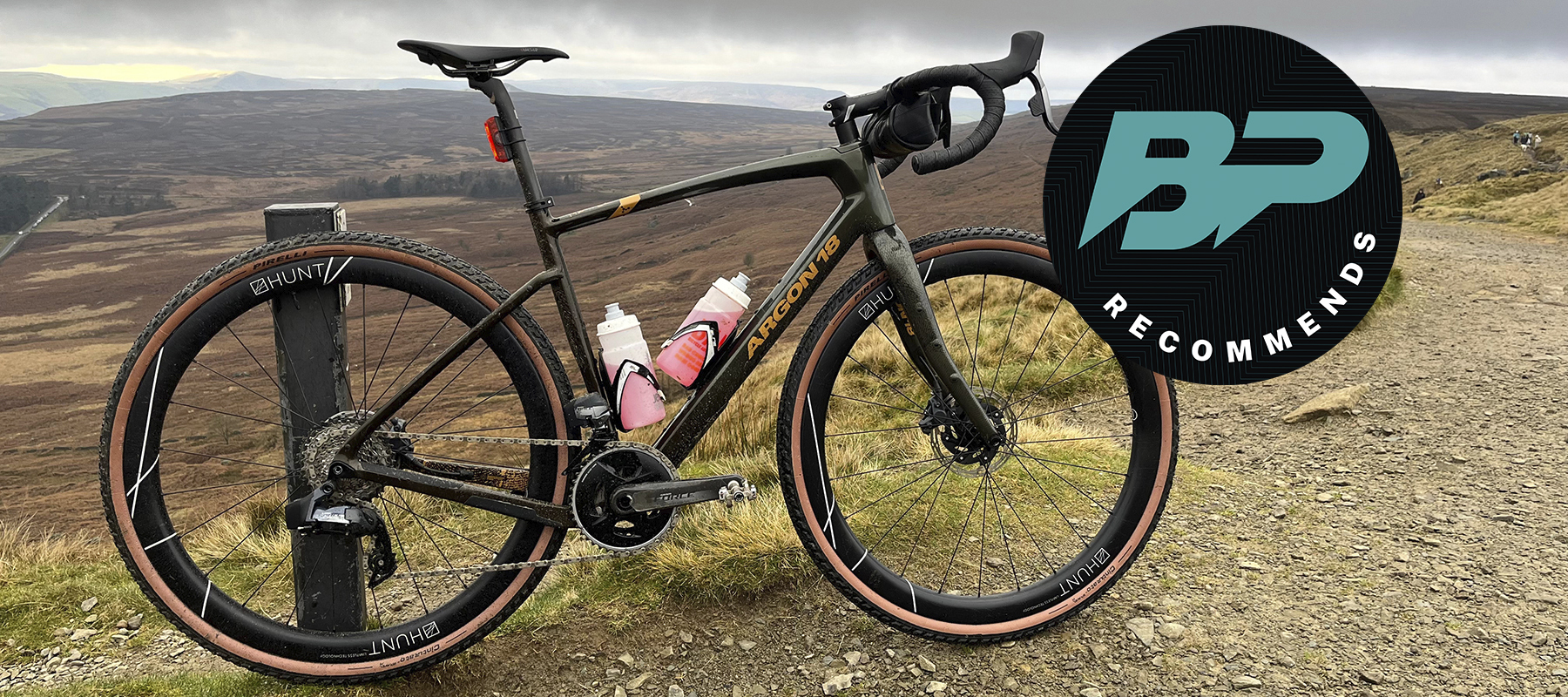Bike Perfect Verdict
With gravel bikes seemingly fitting into tighter and tighter niches, the Dark Matter was reassuringly good at everything I'd want to do on a drop bar off-road bike.
Pros
- +
Deceptively fast
- +
Lots of mounting options
- +
A comfortable, well-balanced position
- +
Impeccable high-speed manners
- +
Happy on a wide range of terrain
Cons
- -
I would prefer a 1x option
- -
140mm rear rotor is not ideal when fully loaded
Why trust BikePerfect
Argon 18 might not be a familiar name in the off-road world, but the Canadian brand has been making innovative and exciting bikes for road, track, and triathlon at the highest levels for years. The Dark Matter is their gravel offering and aims to follow the rest of their range to be one of the best gravel bikes. The Dark Matter has been around for a few years, and we rode it back in June 2023 for a first ride at the challenging FNLD GRVL event.
I've since been putting the miles in on my local Yorkshire trails, which sadly bear no resemblance to the dry and dusty trails we tested the Dark Matter on in Finland but still provide a suitably wide range of terrain to test any bike. Graham Cottingham found the bike to be fun and engaging on his first ride review, so how did it fare away from a race scenario?
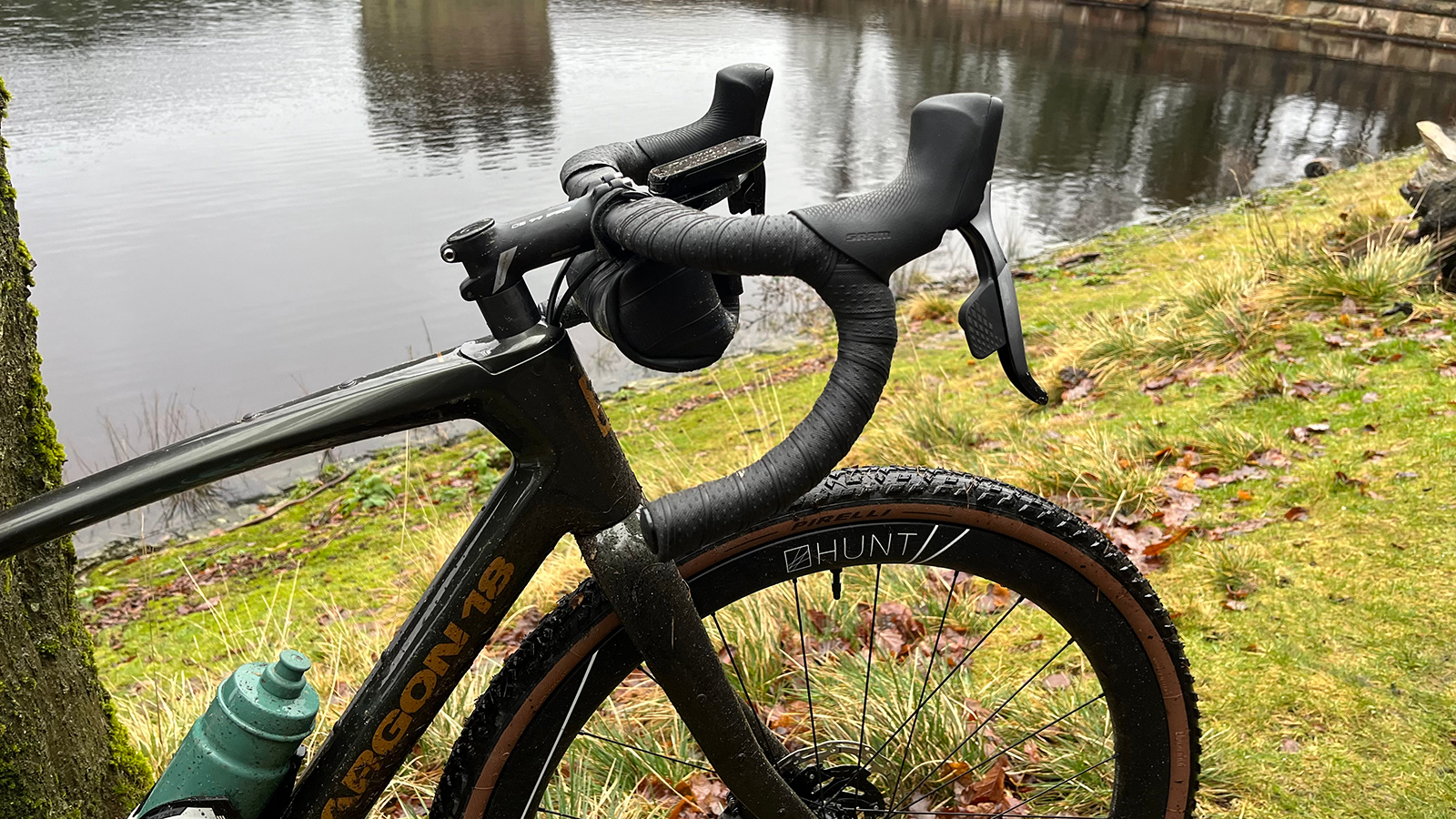
Sizing and geometry
The Dark Matter sizing goes from an XXS 44cm frame up to an XL 62cm, and all have size-specific geometry to ensure you get the same ride quality, whatever your height. This might seem like a small detail, and they aren't the first to do it, but I've seen many bikes over the years that simply take the Medium and shrink or enlarge it with minimal development of the extremes in sizes, so kudos to Argon 18 here.
After checking out the geometry chart, I settled for a Small. I usually go for around 54cm on a drop bar bike, but the stack of 569mm and reach of 377mm on the 51-53cm small suited me better. If you find the stack a little low, you can increase it easily using their 3D+ system, which uses a neat interchangeable headtube section that integrates smoothly with the rest of the frame and adds 25mm of stack height.
The geometry is relatively middle-of-the-road in keeping with its do-everything nature, with a 71.5-degree head angle, 74.3-degree seat angle, and a 535mm top tube. The Small has a 428mm chainstay, and the bottom bracket drop is a standard 70mm, with a wheelbase of 1,024mm.
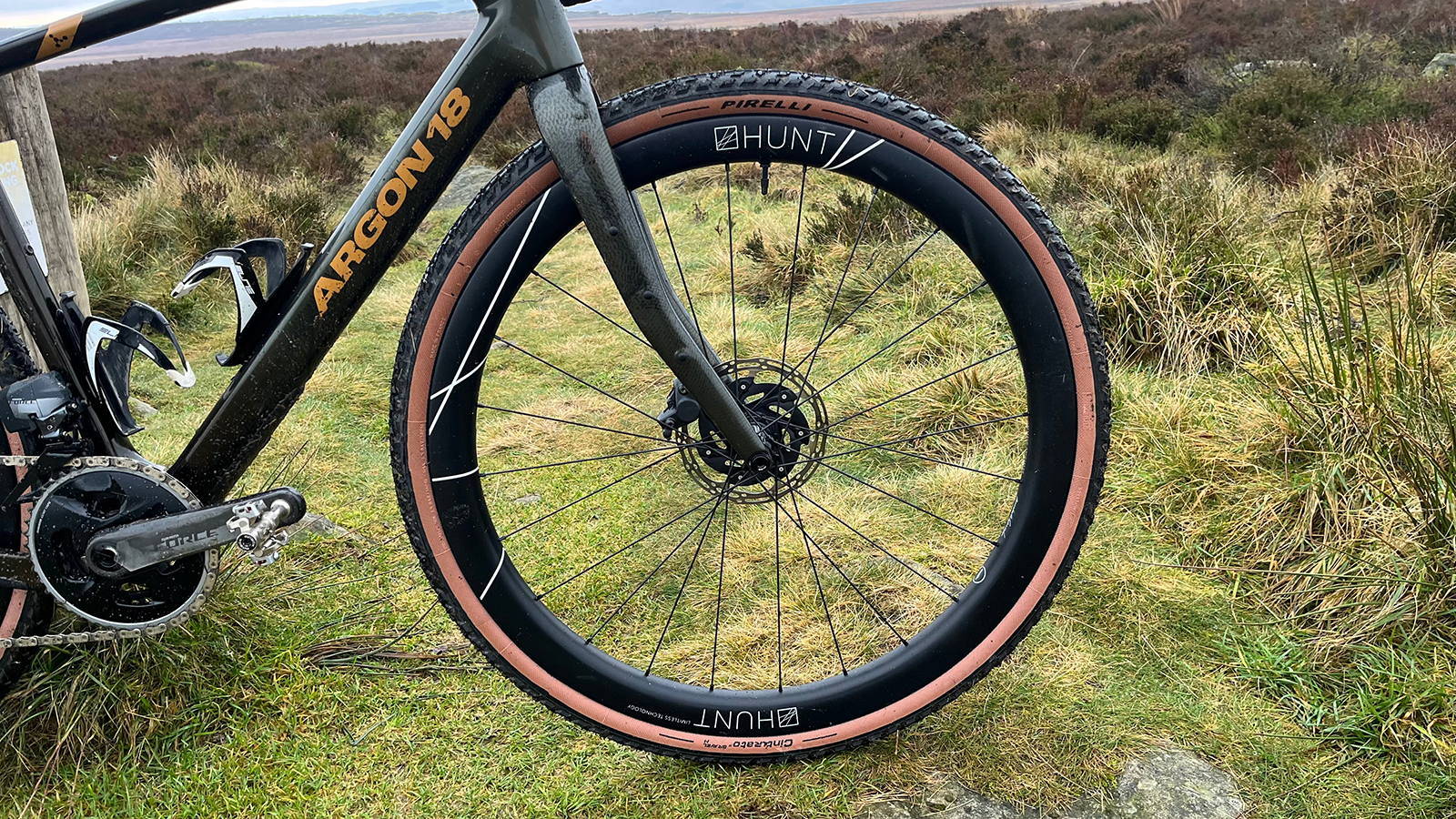
Design and specifications
The first thing I noticed was the fork, which stands out compared to the other gravel bikes I've had on test recently. The legs have a considerable amount of curvature, which is often misnamed rake (rake is more accurately referred to as offset). The curve of the fork is designed to offer greater compliance, allowing the fork to compress more efficiently and offer a higher degree of comfort compared to a straight blade. This was commonplace on older bikes designed for longer distances but is rarely seen on modern carbon bikes.
The rest of the frame is a stout, angular affair, with dropped seatstays and aggressively dropped chainstays that help keep them relatively short while giving adequate tire clearance. Argon 18 says the Dark Matter is suitable for up to 45mm tires, which is OK but a little behind the latest adventure-style bikes. The front mech on my bike also limited clearance somewhat, though it caused no issues during testing.
The front derailleur tab is removable, and there is a plethora of frame bosses to mount your bike packing gear, including triple bosses on the fork legs, top tube bag bosses, mudguard eyes front and rear, and a selection within the main triangle. Some bolt-on rubber frame protection mounts on the downtube protect the tubes from rocks deflected from the front wheel.
Two colors are available: Inferno Red and the classy Wild Olive I had on test. The images don't really do the paint job justice. It is a beautiful deep green with a gold shimmer and matching gold decals, with some nice details all over the frame. I'm not usually that bothered with bike color as it's very subjective, but I found it easy on the eye and, for me, the better of the two options.
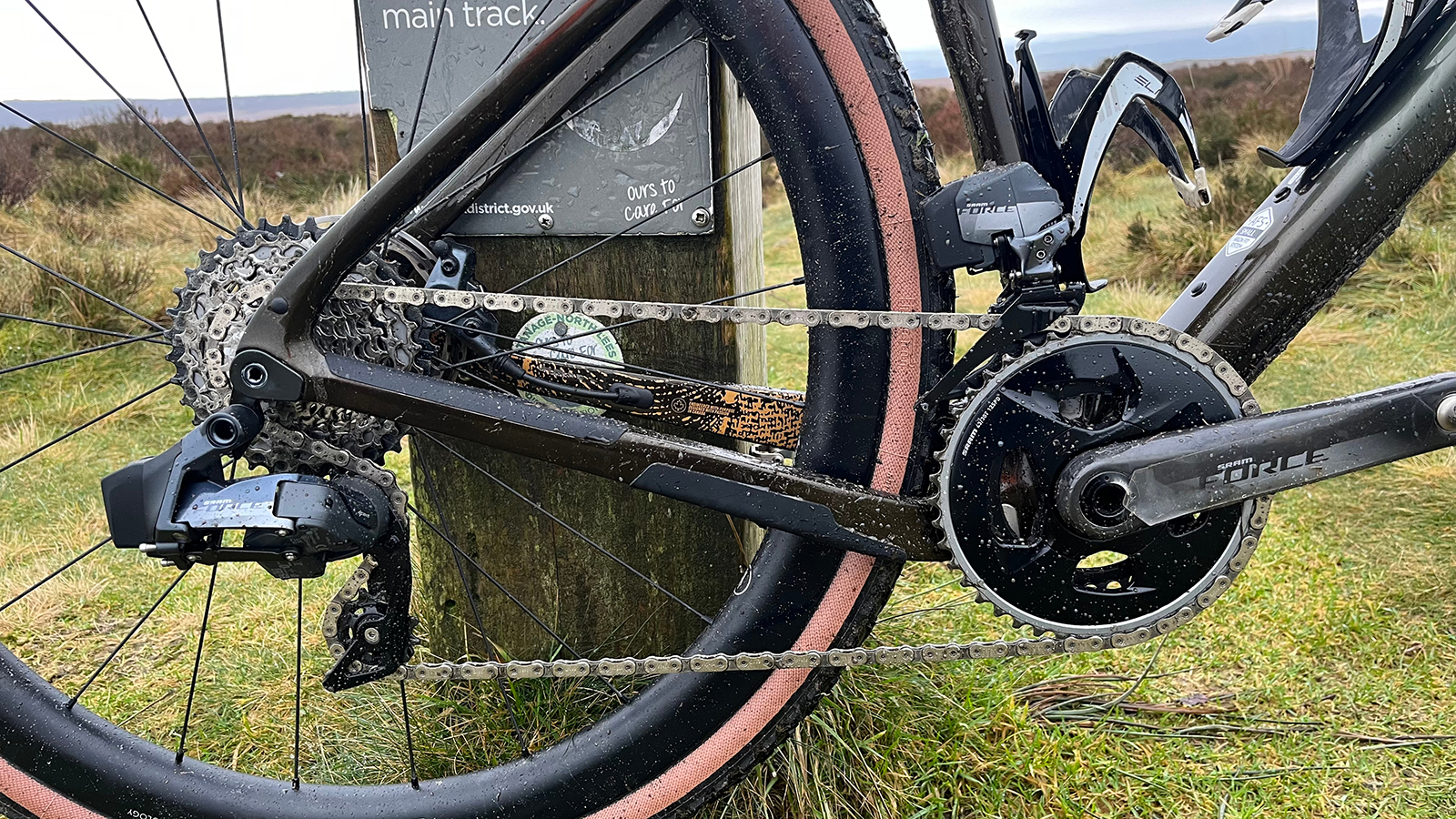
Components, pricing, and build
My test bike was specced with a full SRAM Force 2x groupset, which surprised me initially. It's been a while since I've ridden anything off-road with two chainrings. While the cassette with its range of 10-36t and chainset of 30/43t chainrings provided plenty of range, I much prefer SRAM's mullet (not to be confused with different wheel size references) of a single chainring and wide range cassette on the rear. Despite my concerns, the Force groupset was flawless, with crisp, positive shifts and all the ease and benefits the AXS system provides. I got used to the double chainring setup pretty quickly, and on a few road group rides, I did find the closer gear ratios were helpful for maintaining a good balance between cadence and speed, but I still would have preferred a 1x setup. I find the simplicity and wide range much better off-road, and the lack of a front mech means one less battery to charge and increased tire clearance.
My test bike is actually a 2023 model, and thankfully, all four of the 2024 models use SRAM's 1x setup, with the base model selling at $3,700 / £3,500 / €4,000 up to the top of the range Force AXS XPLR version at $5,800 / £5,500 / €6,300. The specs on the latest version are the same, apart from the gearing with the same wheels and finishing componentry as my test bike.
The rest of the spec worked well and fitted the do-it-all nature of the bike. The Hunt 42 Limitless wheels are a highlight in the spec sheet and really accentuate the frame's speedy intentions. They had a 160mm rotor up front and a 140mm rear, which are adequate, but I personally prefer a 160mm front and rear, especially when riding loaded up. My test bike had a pair of Pirelli Cinturato Gravel M tires fitted, which worked better in the wettest winter we've had in some time, but it comes with the Vittoria Terreno Dry as standard, which is an excellent tire for the dry and dusty conditions I can only dream of currently.
Handlebars and stem are courtesy of FSA. The bars are the 42mm wide A-Wing model with a gentle flare and slightly ovalized top section, and wrapped with Ciclovation's Grind gravel-specific tape – a nice touch as a good quality bar tape can make a world of difference to how a bike feels. The seatpost is Argon’s own, has a reversible saddle clamp with a 15mm or 25mm setback, and is topped with a Repente Quasar saddle.
My Small bike came in at 18.8lbs/8.54kg, which, in keeping with the rest of the bike, is neither super light nor heavy but somewhere in the middle.
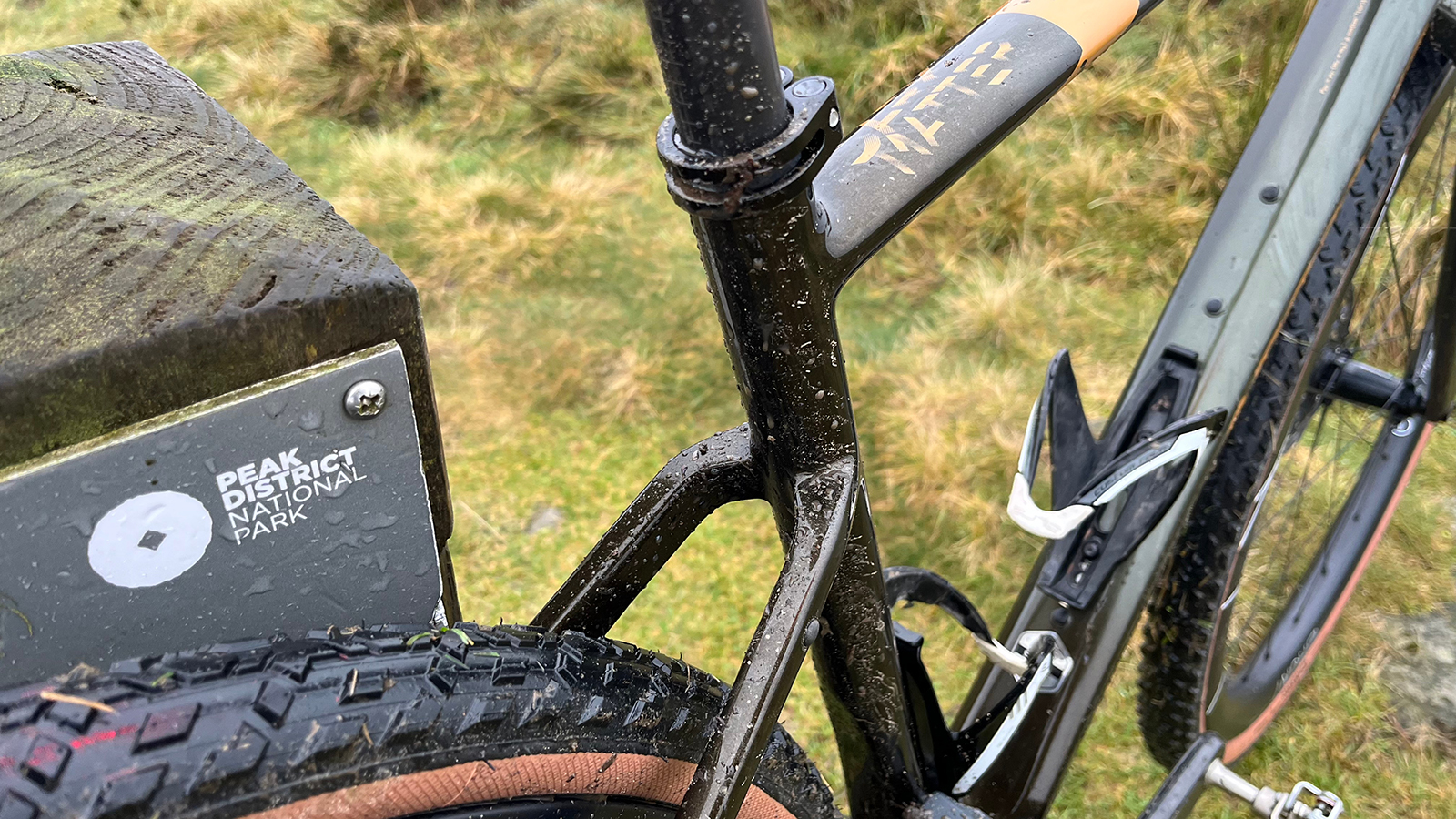
Ride, handling and performance
The Small frame, with 25mm of standard spacers, was an excellent fit for me, low enough to feel efficient without feeling too aggressive for long rides and technical trail sections. It is worth noting that this frame has a lot of adjustments, from the 3D+ stack adjustment to the reversible seatpost clamp so that you can find your ideal fit easily.
The handling is fantastic, fast without feeling skittish and jittery, and comfortable without feeling slow and laborious. It feels similar to race-orientated bikes like the Cervelo Aspero under acceleration but with a softer, more subtle edge, making it a great option for long rides. I used it for the final ride of my Rapha Festive 500, and despite my very tired legs, it felt like it floated around the 95km Peak District loop with relative ease.
It's no slouch on technical terrain either, the main limitation being the 45mm maximum tire width. It felt composed and predictable on wet roots and rocky sections and more forgiving of lousy line choices than more aggressive lightweight gravel bikes. I've no science to back it up, but I felt the shape of the fork really helped with this. It felt noticeably more forgiving on the front end than the stout, angular appearance would have you think and required less wrestling on rough corners to keep to your line choice.
The multitude of mounts shows its bikepacking intentions, and it performed well here. Its relaxed nature works well with the extra weight of bikepacking kit. Obviously, the extra load dulled its speedy feel, but it was still relatively sprightly and a good companion for longer adventures, though the increased mass does put more strain on the 140mm rear rotor than ideal.
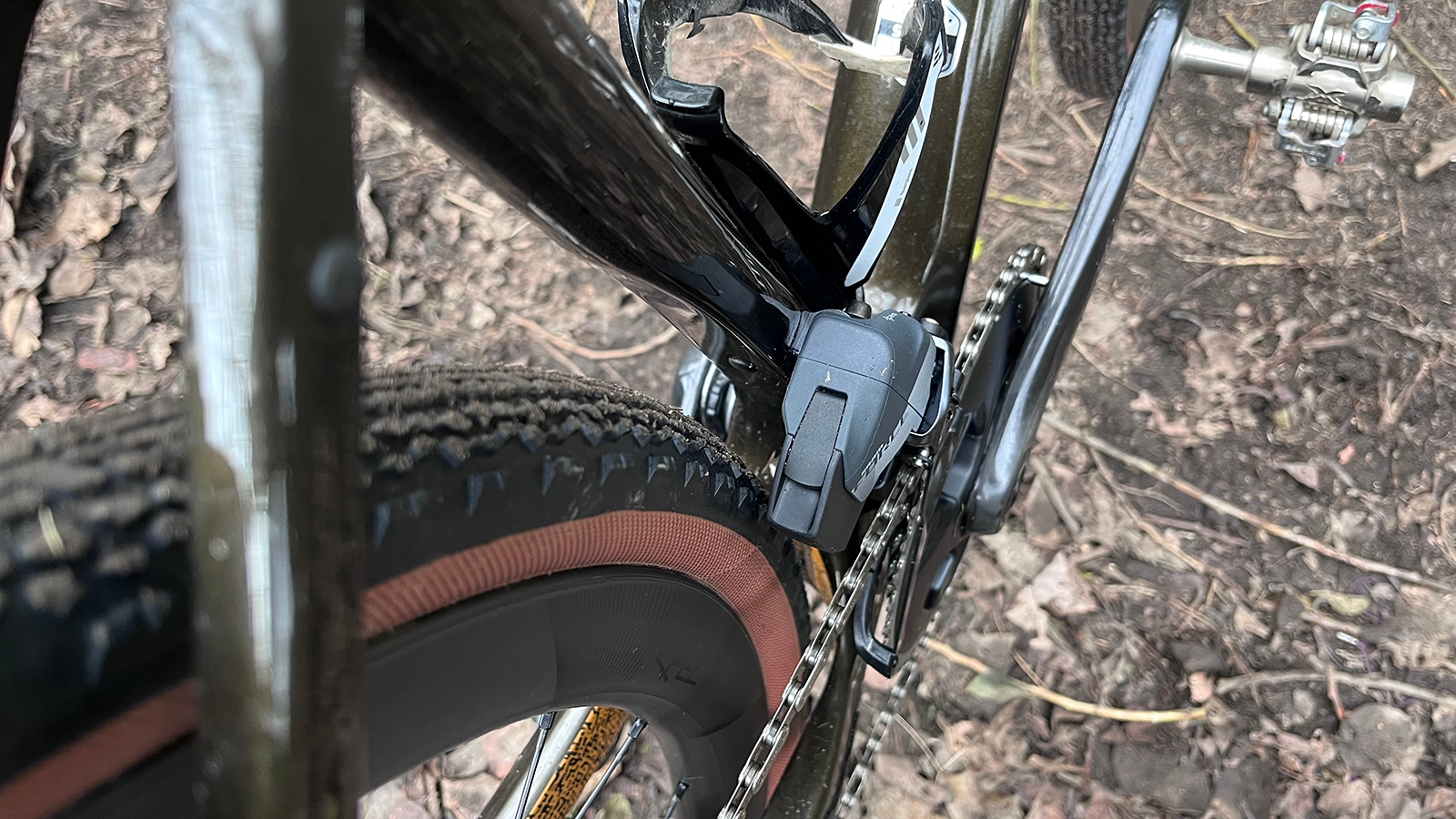
Verdict
I was genuinely sad when I had to give the Dark Matter back. It had grown to be like an old friend on the trail. With the current trend in gravel for specialization into smaller and smaller niches, it was lovely to have a bike that seemed to be good at pretty much everything I like to do, which, to me, fits the spirit of gravel better.
With its wide range of adjustments with stack height and reversible seatpost, I found it easy to get the fit dialed, and the use of good quality contact points really helped. It's surprising how a small detail like bar tape and handlebar shape can make such a difference, yet brands often miss it.
My only criticism is the 2x setup my bike had, which technically worked perfectly but isn't as slick or as user-friendly as a 1x option. Thankfully, Argon 18 has addressed this, with all 2024 versions running a single ring up front.
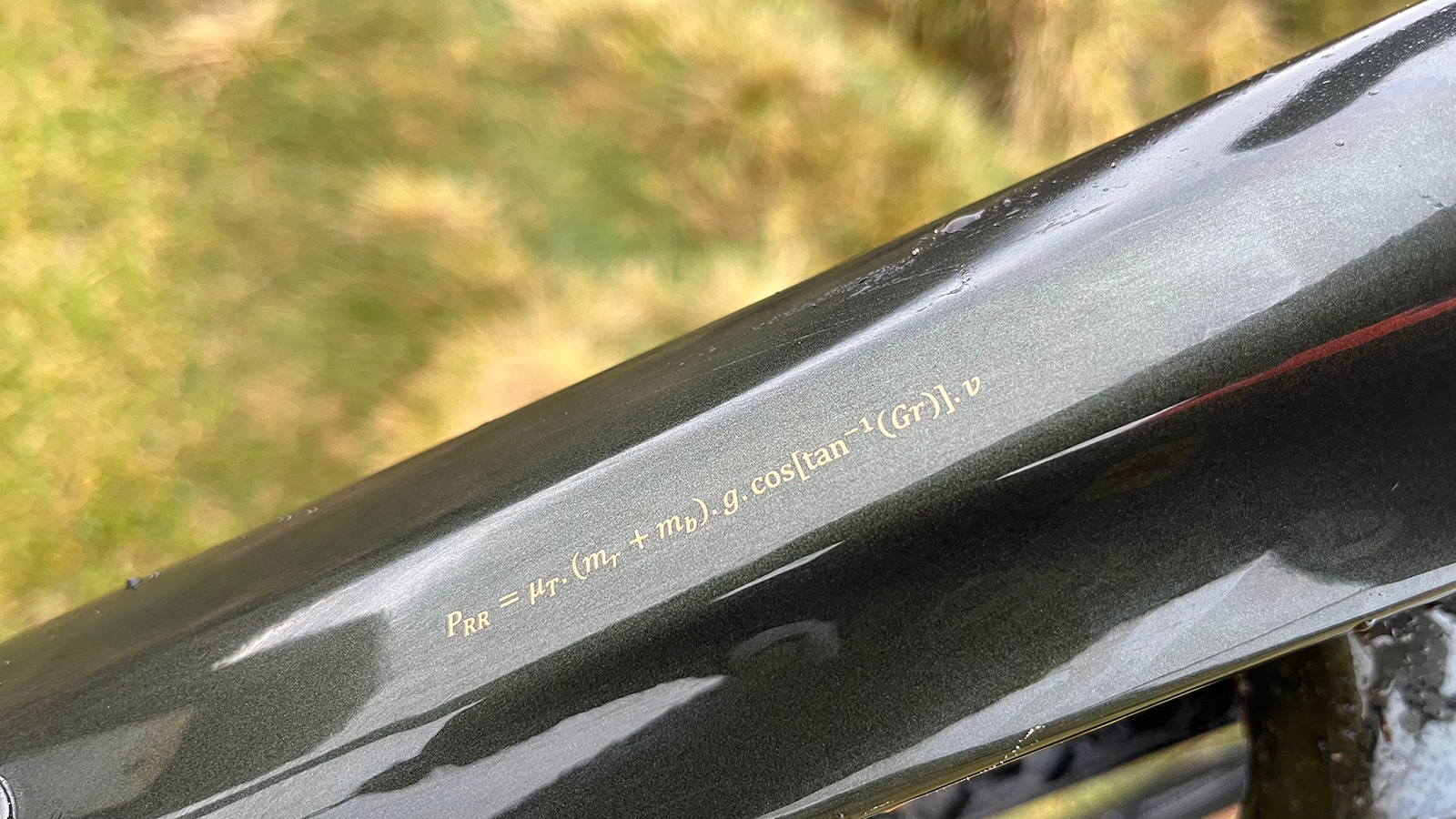
Test conditions
- Surface: Tarmac road to gravel and mud
- Trails: Roads, national cycle routes, fire roads, farm tracks, double tracks across moors, singletrack through woods, etc
- Weather: Autumnal through to deep winter conditions from 14 to -2 degrees centigrade
Tech specs: Argon 18 Dark Matter gravel bike
- Price: $5,800 / £5,500 / €6,300
- Frame: Carbon
- Sizes available: 2XS to XL
- Weight: 8.48kg /18.66lbs (size small tested)
- Groupset: SRAM Force eTap AXS
- Crankset: SRAM Force 43/30
- Cassette: SRAM Force 10-36T
- Wheels: Hunt 42 Limitless gravel
- Tires: Pirelli Cinturato Gravel M
- Brakes: SRAM Rival eTap with Paceline rotors
- Bar/stem: FSA A-Wing Pro AGX 42mm, FSA OS-99 90mm
- Seatpost: Argon 18 TDS
- Saddle: Repente Quasar
- Colors: Wild Olive Gloss or Inferno Red Gloss
- Available from: Argon18.com
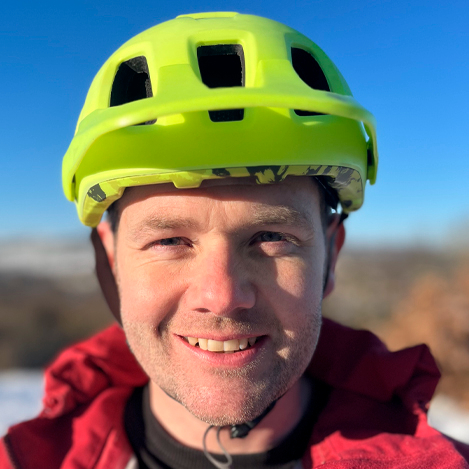
Neal has been riding bikes of all persuasions for over 20 years and has had a go at racing most of them to a pretty average level across the board. From town center criteriums to the Megavalanche and pretty much everything in between. Neal has worked in the bicycle industry his entire working life, from starting out as a Saturday lad at the local bike shop to working for global brands in a variety of roles; he has built an in-depth knowledge and love of all things tech. Based in Sheffield, UK, he can be found riding the incredible local trails on a wide variety of bikes whenever he can
